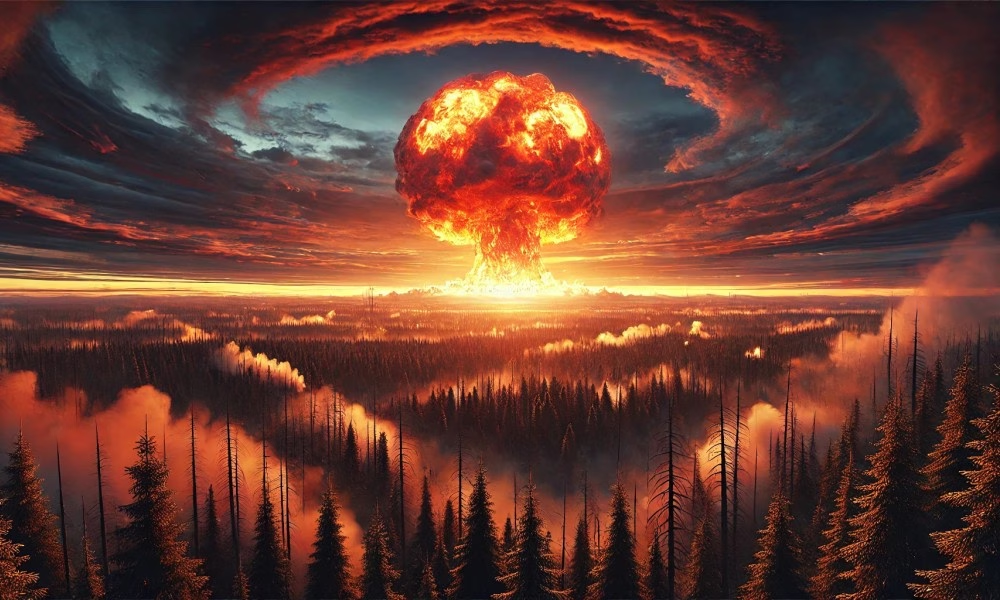
In the early morning hours of June 30, 1908, a remote area of Siberia experienced what can only be described as one of the most explosive mysteries of the 20th century. An enormous fireball streaked across the sky and exploded with a force greater than any man-made weapon at the time—flattening 800 square miles of forest, scorching trees, and blowing people off their feet hundreds of miles away. It became known as the Tunguska Event. And more than a century later, scientists still haven’t fully agreed on what exactly caused it.
A Blast Without a Crater
The Tunguska explosion released energy estimated between 10 to 15 megatons of TNT—about 1,000 times more powerful than the atomic bomb dropped on Hiroshima. Witnesses from as far away as Europe reported seeing a strange glow in the night sky, while people closer to the blast area claimed they felt heat like standing too close to an oven. The shockwave was detected around the world.
Yet, for all that destruction, there was something conspicuously missing: a crater. Usually, an explosion of that magnitude would leave a massive hole in the ground. But nothing of the sort was found. In fact, when scientists finally reached the site—19 years later, in 1927—they found scorched and flattened trees in a radial pattern, as if something exploded in mid-air.
The Asteroid Theory (With a Twist)
The most widely accepted explanation today is that an asteroid—likely made of stone rather than metal—entered Earth’s atmosphere at around 33,000 miles per hour. Rather than striking the Earth, it exploded mid-air due to pressure and heat, roughly 3 to 6 miles above ground. This would explain the lack of a crater, while still accounting for the massive blast and the trees being knocked over in every direction from a central point.
Still, no definitive asteroid fragments were ever found. That’s right: nothing tangible to say, “Here’s the rock that caused it all.” Some scientists argue that the asteroid completely vaporized in the atmosphere, leaving no trace. Others suggest that a comet, mostly made of ice, could have caused a similar explosion and would have left even fewer traces.
Enter the Theories—And Some Get Weird
Naturally, where there’s ambiguity, there’s pseudoscience. Over the decades, a bevy of alternative theories have popped up like mushrooms in the Siberian soil.
Aliens: Some UFO enthusiasts suggest the Tunguska explosion was the result of a malfunctioning alien spacecraft that self-destructed in mid-air—or, even more dramatically, that a second alien craft shot it down to save humanity from destruction. Both theories, while imaginative, lack any credible evidence.
Tesla’s Death Ray: Another theory links the Tunguska blast to Nikola Tesla’s experiments with wireless energy transmission. Tesla reportedly had a large tower (the Wardenclyffe Tower) that could theoretically transmit energy across vast distances. Some conspiracy theorists suggest that he was testing his invention and aimed it toward the Arctic, accidentally hitting Siberia instead. Again, there’s no documentation, data, or witnesses to support this beyond Tesla’s own eccentric reputation.
Natural Gas Explosion: Some geologists have proposed that the explosion might have been caused by a massive release of natural gas from below Earth’s surface, ignited by a lightning strike or other natural cause. While this could theoretically flatten trees and ignite the forest, it doesn’t fully account for the observed atmospheric effects or global shockwave detections.
Modern Relevance
Tunguska is more than just a historical curiosity. It’s a wake-up call.
Every few hundred years, Earth gets hit—or almost hit—by a sizable space rock. The Tunguska Event reminds us how vulnerable we are to celestial objects, and how lucky we were that this one exploded over a sparsely populated area. Had it detonated over a major city, millions would have died instantly.
As of today, NASA and other space agencies track thousands of near-Earth objects (NEOs) and are developing systems to divert potential threats. Tunguska is often cited as the most serious modern example of what can happen if we aren’t paying attention.
Conclusion
Whether it was an asteroid, a comet, or something stranger, the Tunguska Event remains one of Earth’s most fascinating unsolved scientific puzzles. Despite extensive research, no single theory can claim absolute victory. What’s certain, however, is that something exploded with incredible force over Siberia, and it left behind a scar on the Earth—and in the annals of scientific mystery.
In the words of one early researcher who visited the site in the 1920s: “It was as if the forest had lain down to sleep.” But it wasn’t a gentle bedtime story—it was more like a cosmic sucker punch we never saw coming.




